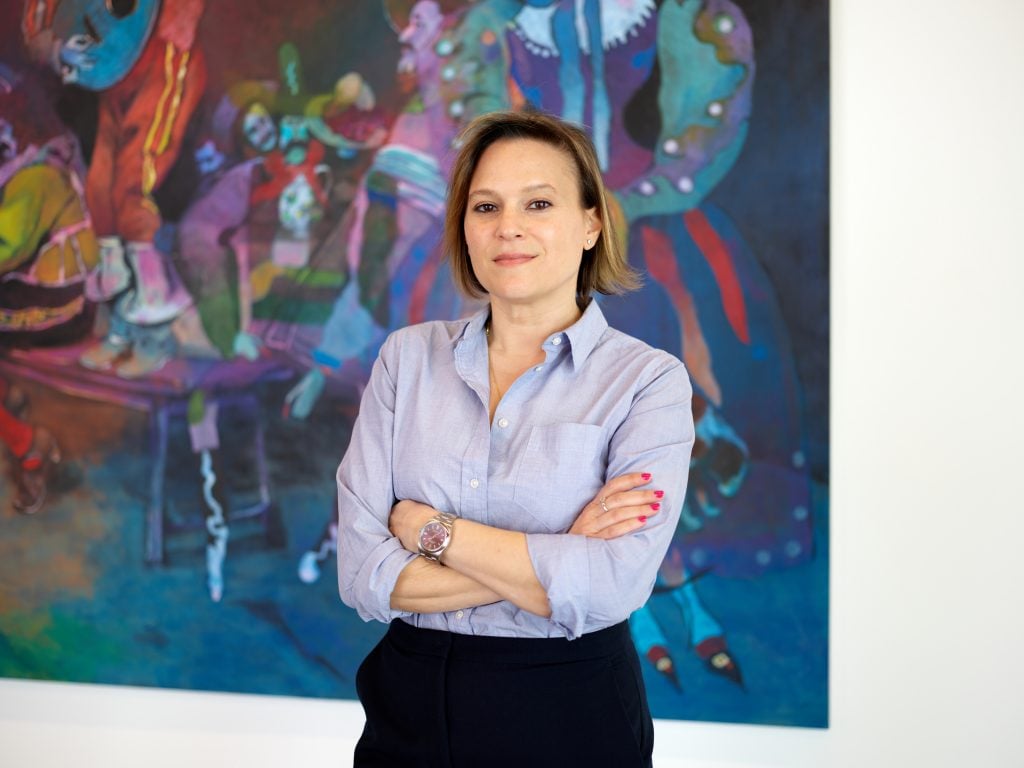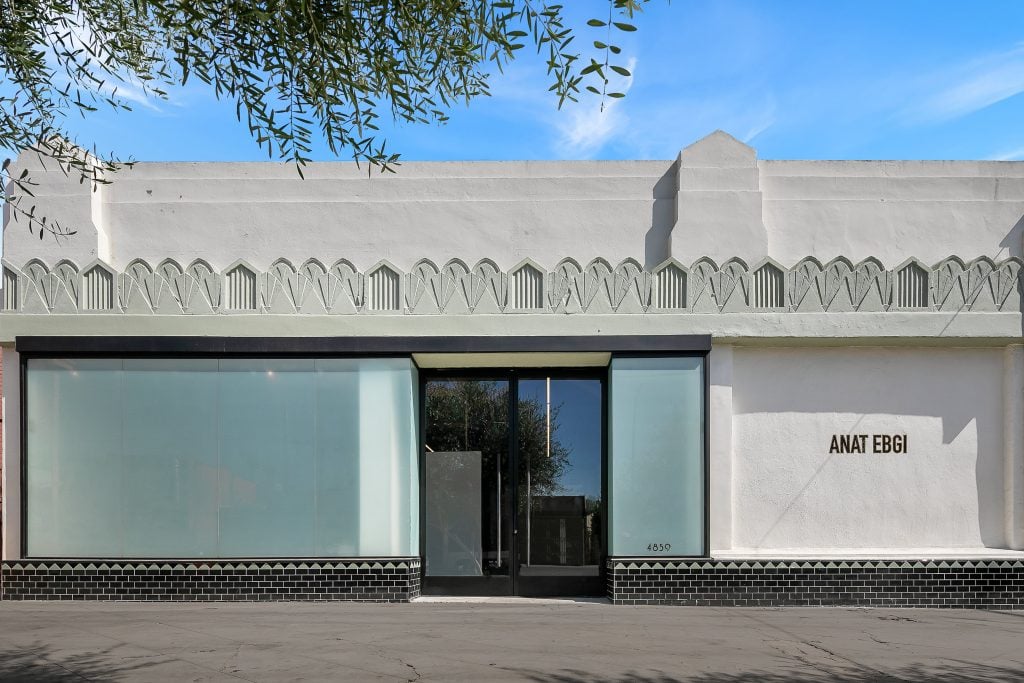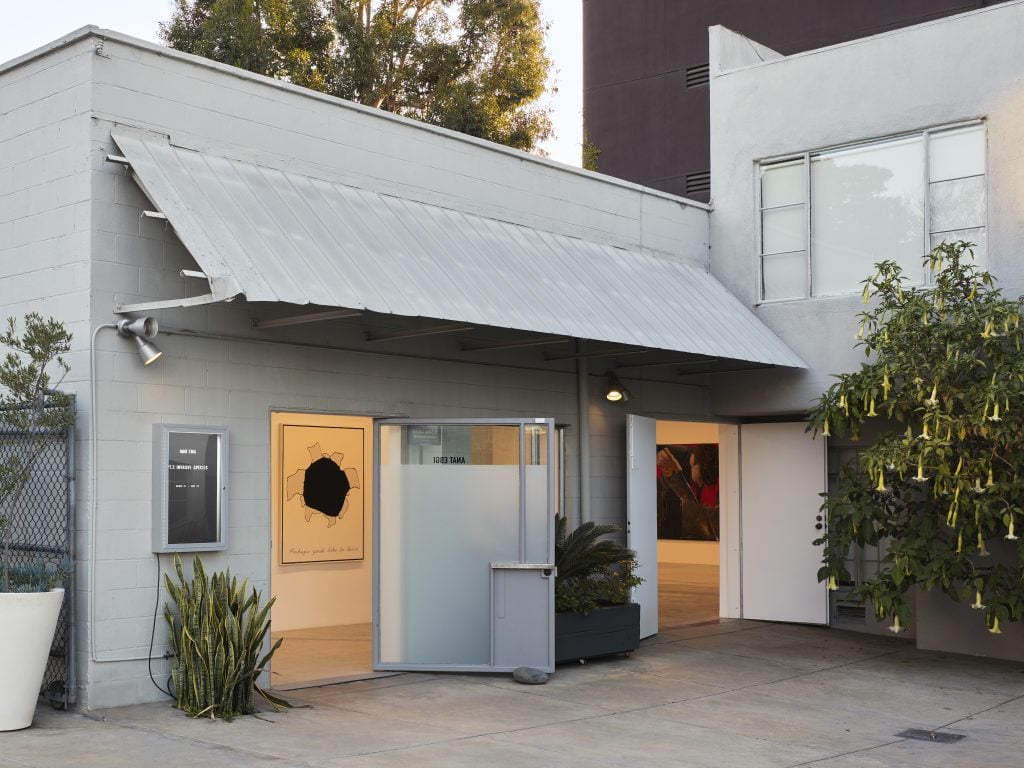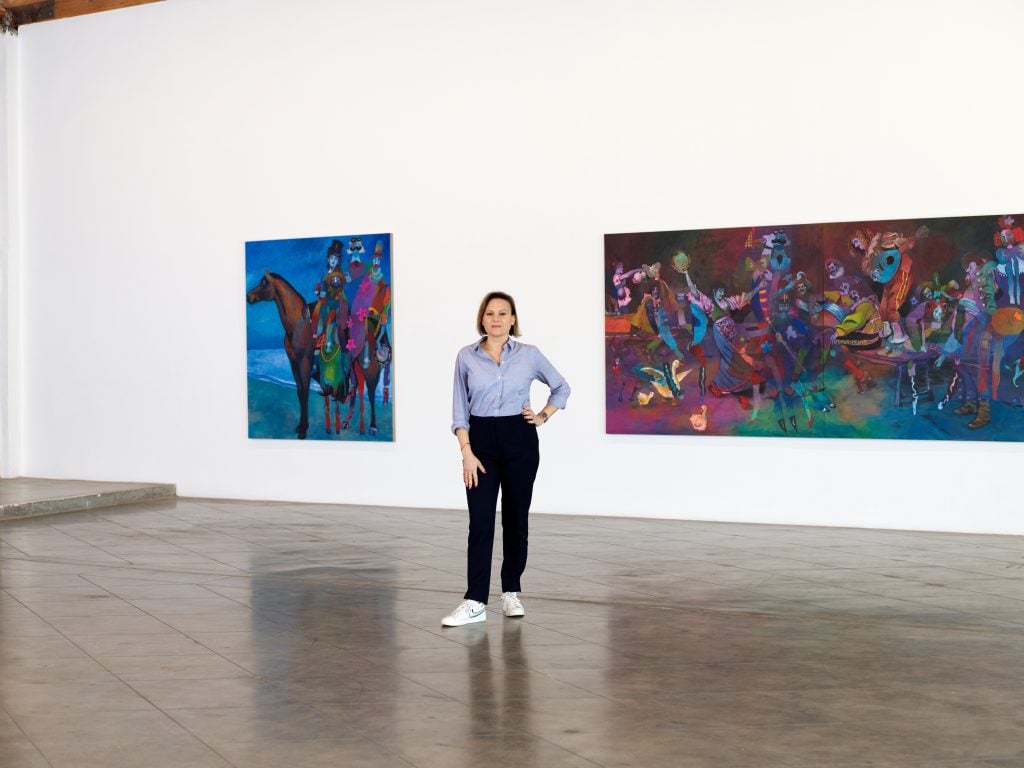Op-Ed
Gallerist Anat Ebgi Reflects on Why Los Angeles Is a Place ‘Where People are Willing to be More Provocative’
Once a transplant herself, the now-established dealer welcomes the city's latest entrants to the fold.

Once a transplant herself, the now-established dealer welcomes the city's latest entrants to the fold.

Anat Ebgi

Last year, I opened my third gallery in Los Angeles on Fountain Ave in East Hollywood. At the time, the dealers I’d been surrounded by for years were expanding to New York, Tokyo, Seoul—faraway cities with entirely different vibes and histories. But for me, it’s still all about L.A. There’s something special about this place—about the way it fosters talent and encourages creativity and exploration.
I am not originally from Los Angeles. After growing up in the vibrant but terribly under-recognized Miami art scene in the 1990s, I moved to New York, first studying at the New School University, and then at Bard College, where I did an M.A. in curatorial studies. Not that my New York bonafides translated easily to the L.A. community when I arrived here in the mid-2000s. The city had its own history, and it was less invested in the establishment that drives the scene in New York. Even among the institutions that do exist here, there’s a sense of grassroots involvement—by the people, for the people. Don’t forget, even the Museum of Contemporary Art (MOCA) was founded by artists.

Ebgi’s 4859 Fountain Avenue facade. Photo: Christopher Amitrano. Courtesy of Anat Ebgi.
But really, the most important institutions in L.A. are the art schools. John Baldessari taught at CalArts for 22 years; Charles Gaines taught there for decades, too. One of the artists I show, Cosmo Whyte, teaches at UCLA. The schools have a symbiotic relationship with the city: they nurture artists who live, work and show here, which means open studios are still a huge part of the culture. I’ve even taken my children to many open studios.
People here really care about the local scene; artists bring one another to their openings, and L.A. folks are always excited about homegrown talent. That’s why Made in L.A. has been so successful: it taps exactly into that feeling of comradery that L.A. encourages. It also creates an environment where people are willing to be more provocative, and more open to taking risks. Seeing “WACK!: Art and the Feminist Revolution” at MOCA suggested to me that even the big museums were willing to be bold.
Which is exactly what I went for, too. The first gallery I opened here, in 2008, was called The Company, and it was a real experiment. We had performances and happenings and ran the whole thing out of the registration office at the Moytel in Chinatown, which was so run down the landlord let me skip the first six months of my $500 rent in exchange for doing some repairs on the inside. We had free rein. One of our earliest shows was “Screwball Asses,” a show of queer art curated by Hedi El Kholti, the coeditor of Semiotext(e), and David Jones. At another point we screened a full-on gay porn film outdoors. We could do what we wanted.

The exterior of Ebgi’s 6150 Wilshire Avenue location. Photo: Matthew Kroening. Courtesy of Anat Ebgi.
Not that it was easy. While artists and a few collectors welcomed me with open arms, it took excruciatingly long for L.A. collectors and institutions to take notice of the gallery. And now I understand why: a lot of people move out West thinking they can reinvent themselves overnight. I was just another Easterner out here, and Angelenos are always wary that those folks are ultimately just passing through. And there is a lot of transience. It takes years to build up the trust of folks around here, for them to believe you’re sticking around. So it was important, in my early years here, to do lots of art fairs and be visible to a national and global audience, to both keep the lights on and show that, hey, I’m here for the long haul.
Obviously, things have changed since then. The scene has grown and grown, and so has the collecting class. One thing that distinguishes the collectors here, versus a place like New York, is not just their professional backgrounds but also their collecting sensibilities. New York is market-dominated, and the biggest players are, appropriately, financiers and real estate moguls. But in Los Angeles, the collectors often work in culture. They’re often film or music producers, and they consider themselves—if not artists, per se—at least collaborators or connoisseurs. They carry a creative energy, and that informs their approach to the art world and collecting. They’re almost like the opposite of financiers: They’re looking less for trophies than for artworks that can generate an imaginative spark, something that can get ideas flowing.

Los Angeles gallerist Anat Ebgi with works by Joshua Petker, currently on view at the Fountain Avenue location. Photo: Matthew Kroening. Courtesy of Anat Ebgi.
There’s space for everyone in L.A. That’s why I’m excited about this latest influx of galleries from elsewhere: Marian Goodman, David Zwirner, Lisson Gallery. Artists—and dealers, too—want to be part of a vibrant, growing scene. The more, the merrier has always been my philosophy. But I do have some advice for our new neighbors: Don’t miss out on what’s going on here. Los Angeles has a ripe and distinct art history of its own, and to me, a defining part of that is how welcoming this place is to the newcomers—I should know. Word of mouth goes a long way. Make a point to find out what’s going on around you. Go over and visit François Ghebaly, cross the road to Night Gallery, and up over to Morán Morán. That’s one way to create community, and that’s what our scene is all about. The first time I hired an electrician to do some work at The Company in 2008, it was the first time he’d ever worked for an art gallery. Now he installs lighting for every dealer on Western Avenue. Let me know if you need his number.